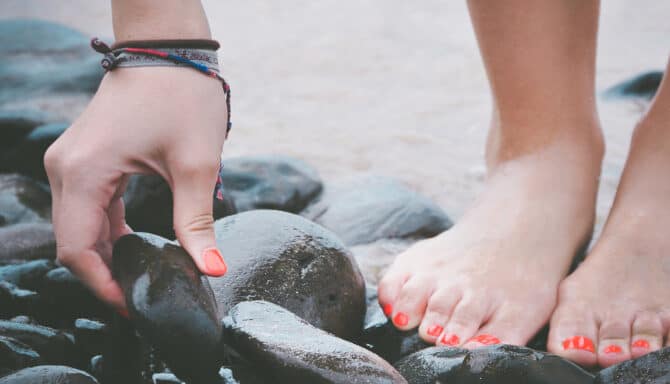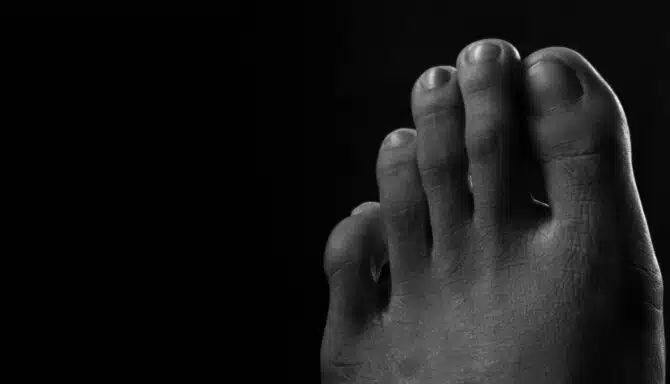A plantar wart is a common viral skin infection that appears as a small, rough growth resembling a cauliflower or solid blister on the sole of the foot. These skin growths are non-cancerous, so there is no need to worry in that regard. When these lesions are located on a weight bearing surface of the foot, they tend to grow inward and will build up hard tissue overtop of it, resembling a Callus or a Corn. Plantar warts affect Both children and adults. Furthermore, they are actually caused by the Human Papilloma Virus, which can come in contact with the top layer of the skin of our feet. They can be contracted by being barefoot in public spaces, such as swimming pools, however, they are generally harmless and not easily transmitted with direct contact with another person. In this article, we will address the questions that may be on your mind concerning plantar warts, including:
- Is it possible to treat plantar warts at home?
- How can I prevent plantar warts?
- What are some common treatment methods?
- Does it take a long time to recover after treatment?
In addition to this article, you can Read our page on plantar warts.
Can I Treat My Plantar Wart At Home?
Unfortunately, for warts that are persistent and present other symptoms, at-home treatment won’t go very far. Some warts can be asymptomatic and may resolve spontaneously on their own, with time. However, more aggressive warts require treatment from a qualified foot specialist. Over the counter treatments, as well as home remedies, usually do not work. Don’t worry, however, we will go over what your next steps should be! You should book an appointment to see a Chiropodist, who will be able to provide a thorough treatment plan, especially if the following are occurring:
- You have tried over-the-counter medications with little to no improvement
- Pain has increased in severity, or is now present when it wasn’t before
- The plantar wart is increasing in size or spreading
What Can I Do To Prevent And Treat Plantar Warts?
Prevention lies with education. Warts thrive in moist, warm environments. This is why it is important to always wear shoes at the gym, public showers, or swimming pools. Protecting your feet and particularly the skin from cuts, scrapes, and tears will reduce the risk of plantar warts. Finally, keep your immune system in check. Eating a well-balanced diet, participating in regular exercise, and attending annual check-ups with your family doctor will help to ensure a proper defence system against harmful viruses. If you are prone to plantar warts or other Foot conditions, it is also important to maintain routine visits at your Local foot clinic.
What Are Some Treatment Methods?
There are a number of different treatment options available for plantar warts, varying from topical ointments, to freezing, to excisions. Here is brief list of treatments available and their recovery times:
- Salicylic acid (prescribed dosage) is a common topical treatment for warts. It acts to break down the bonds between skin cells, softening the skin and making it shed quicker. This treatment is relatively painless and does not require down time.
- Canthacur Plus is a strong topical treatment for warts, causing a blister to develop where applied. Although discomfort will not follow immediately after Canthacur treatment, you may start to feel pain, tenderness, mild swelling, and discomfort several hours after treatment. Symptoms may last for a couple days and up to a week. Most are able to go on with their daily activities, although strenuous physical activity is usually avoided. Multiple rounds of treatment may be required.
- Cryotherapy involves freezing the wart and thereby killing the virus. This treatment may cause some discomfort at the time of application and pain may last for up to 3 days after. Multiple rounds of treatment may be required.
- Excision is a minor surgical procedure performed under a local anesthetic. It involves removing the wart by cutting it out with a scalpel. Most are able to return to normal activity within 3 days and complete healing can take up to a month.
Do You Need Help With A Plantar Wart? Your Solutions Live Here!
All under one roof! Our team is trained to handle any and all your foot health concerns. From mild, to critical, we cover all sides of the foot needs spectrum. Call us to ask about actionable steps towards your solution today!
Call us at 416-769-FEET (3338) or Book Your Assessment Today!










